
Georges-Pierre Seurat (1859-1891) was an innovative French artist who founded a new artistic movement, Neo-Impressionism, and painted pictures by applying many small dots of contrasting color to the canvas at a certain distance from each other. While this method of painting was clearly not for the colorblind, universal tolerance and accessibility were not even considered at the time. However, Seurat's work was later actively used by other artists working in the style of Impressionism and the Avant-garde.
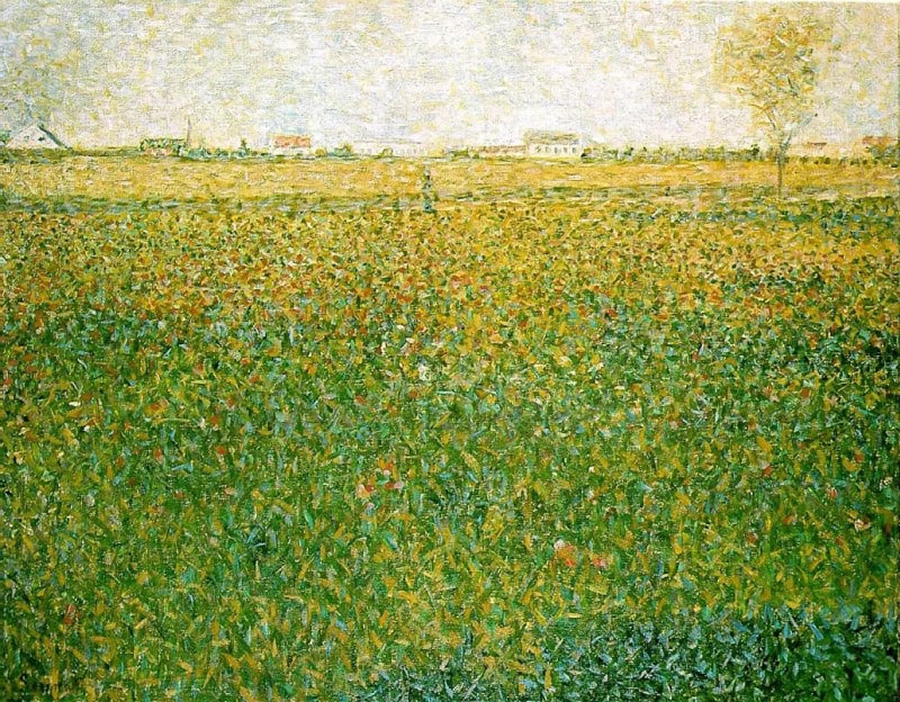
Alfalfa fields, Saint-Denis
Unlike the works of the Impressionists, Seurat's paintings were timeless, monumental, the personalities of the people depicted in them practically erased, they were more like poster figures, where the artist's general message was more important than individual characteristics. Something similar can be found in our wonderful artist Alexander Deineka, although he later received a lot of criticism for his unconventional vision.
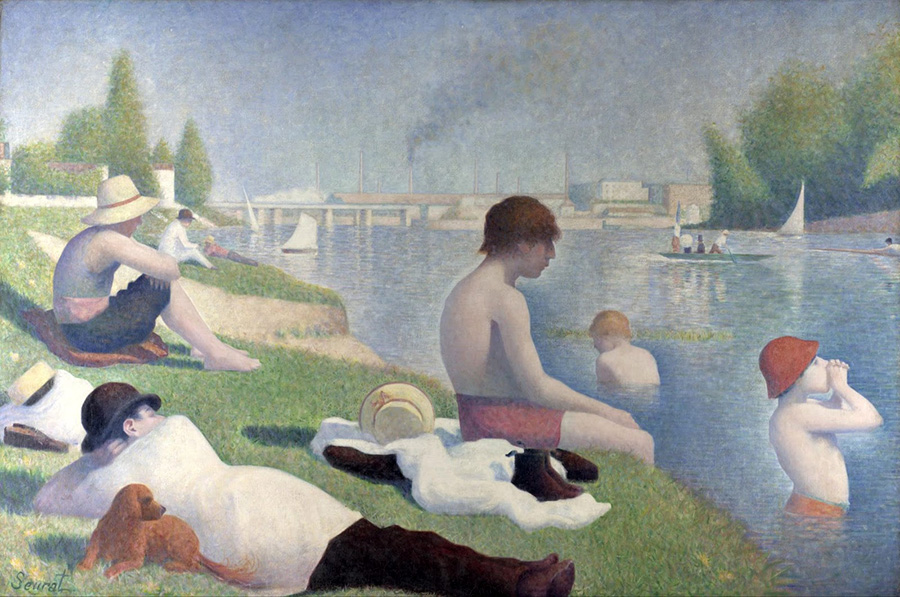
Swimming in Asnieres
Seurat's best paintings were painted in his unique, innovative style, which marked the end of Impressionism. Not all of them were unconditionally accepted by the public and critics at first; his perhaps most famous painting, "A Sunday Afternoon on the Island of La Grande Jatte" was seriously accused of obscenity. In this article, we will talk about the talented artist Georges Seurat and his "obscene" painting, according to some art critics.
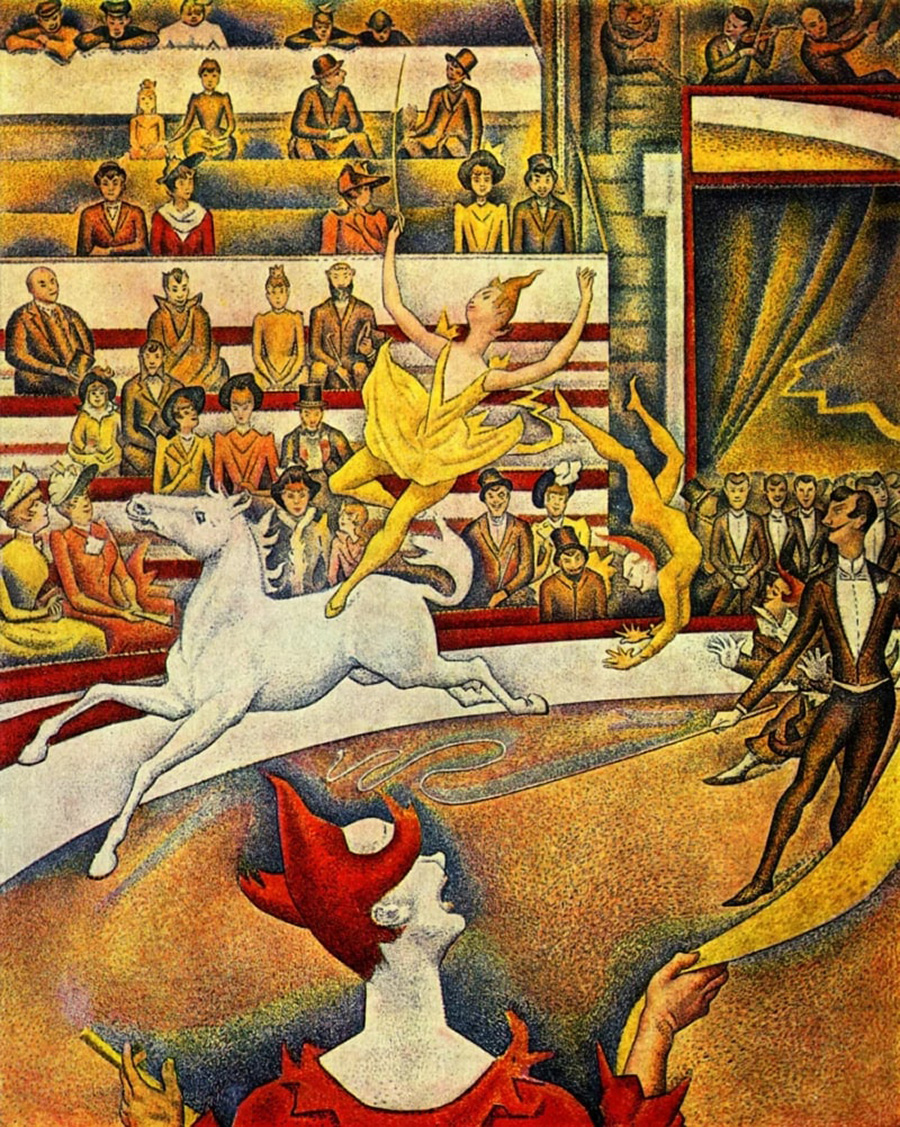
Circus
Artists were not always fond of talking about themselves, but Seurat outdid everyone in this regard. He was an extremely withdrawn and unsociable person, so he only told his parents that he had a wife and son before his untimely death from meningitis. It turned out that he had an affair with his model Madeleine, who gave birth to his child, but, unfortunately, the child did not survive his father for long and died in infancy.
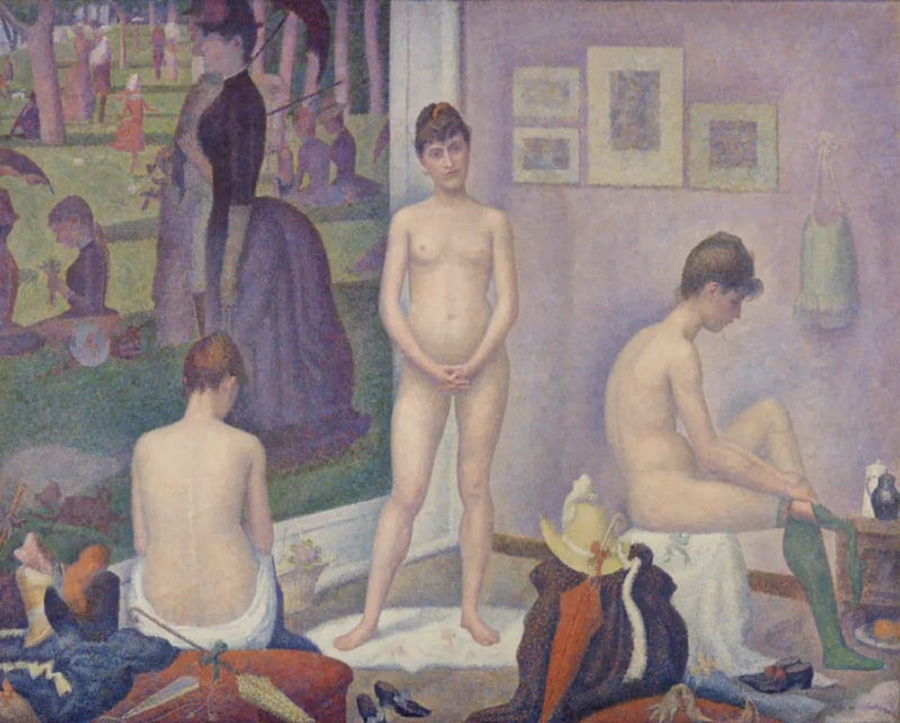
Models
Unlike many other Impressionist artists who struggled to make ends meet throughout their lives, Seurat came from a wealthy family. His mother adored him and was willing to pay for any of her son's hobbies, which fortunately were not too expensive. But Seurat saw his father only once a week - he lived outside the city, separated from the family, visiting relatives on weekends, working as a high-ranking official in the ministry, and after he retired, spending most of his free time in a prayer house he built with his own hands, where he conducted services himself. I wonder how much some of our officials would have to pray in the hope of somehow atoning for their sins? In general, he was a man of peculiarities, and Georges-Pierre Seurat followed in his footsteps.
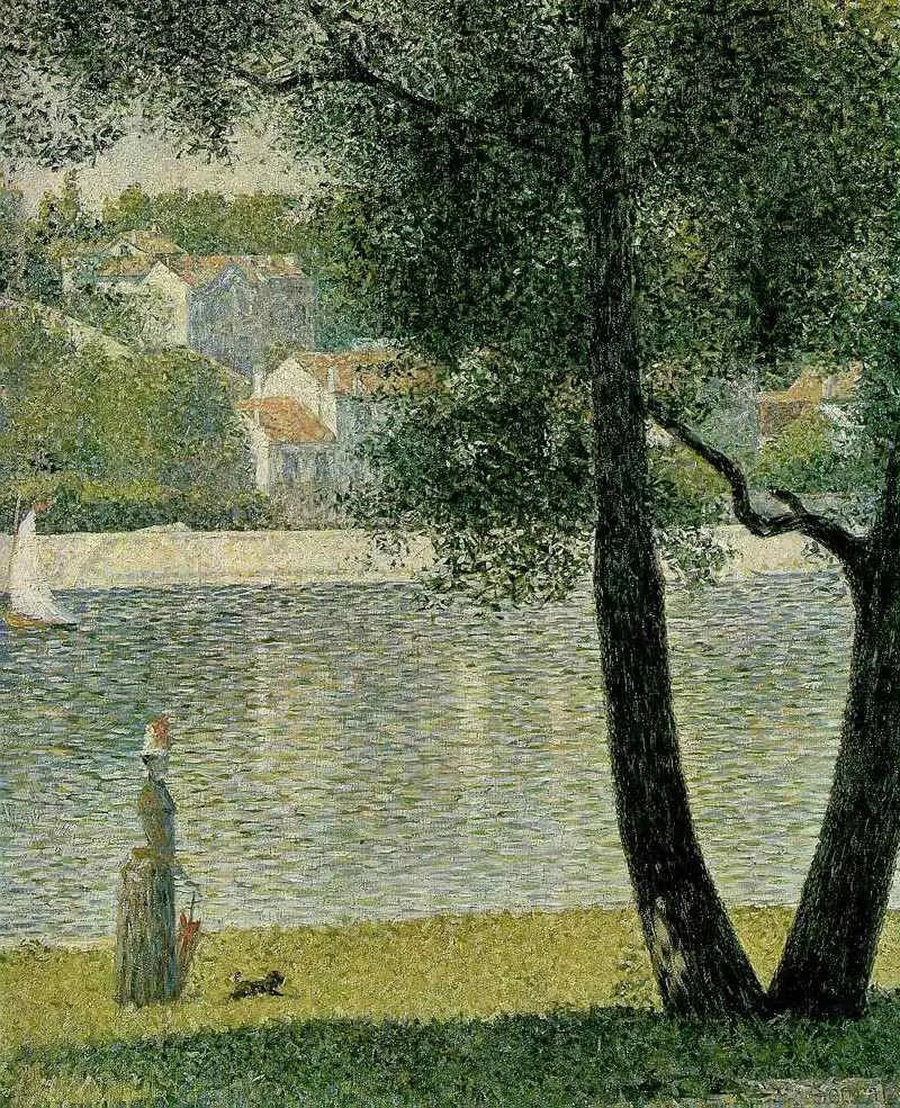
The Seine at Courbevoie
Seurat entered the School of Fine Arts, took a serious interest in the work of the neoclassicist Dominique Ingres, and everyone expected him to paint in an academic style, decorative and correct, which would not be embarrassing to hang on the wall of a rich house. But everything turned out differently.
Seurat did not like studying, so he left the school after two years. But he visited the fourth Impressionist exhibition and was impressed by the paintings of Degas and Monet. "But only a truly creative person can paint like that, and what if we develop a method by which anyone can create paintings" - that was Seurat's way of thinking. The result was pointillism, in which the paintings represent those very dots of pure color. He created his paintings in this unconventional technique, first "Bathing at Asnieres" and then the sensational "Sunday Afternoon on the Island of La Grande Jatte".

"Sunday Afternoon on the Island of La Grande Jatte".
Thanks to the dots, the drawing in this painting is very clear and bright, the figures are monumental, the composition is clearly thought out, this is not a moment here and now, but the artist's reflection on morality and decency in society. Everything is simple - the Grand Jatte was a place for Sunday walks for many wealthy gentlemen who did not mind spending an evening in pleasant company with a girl. Therefore, this place was chosen by courtesans and prostitutes. The general atmosphere of relaxation and easy fun made it easy for them to find clients.
For example, a smartly dressed girl with an elegant hat and a fishing rod in her hands is clearly waiting for a rich lover of nightly pleasures to approach her, and the fishing rod is just for decency, she is interested in a completely different fish. And the lady's leash is not that of a dog, but that of a monkey, which at that time was a symbol of lust and debauchery. So there was something for decent citizens to be outraged about, although perhaps some simply saw themselves in it.
Buy handmade goods or modern art you can on artAlebrio - is an international marketplace for people who want to create, sell, buy and collect unique items and art - buy the best with us artAlebrio.com.
By confirming your order you unconditionally accept these General Conditions of Sale